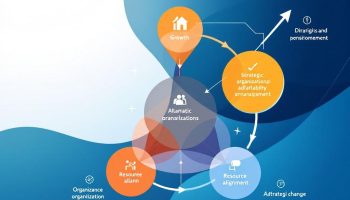
What are Data Analysis Software Tools
Data analysis software tools such as Tableau, Python with Pandas, Power BI, and RapidMiner convert complex business data into actionable insights. These platforms offer powerful visualization, processing, and analytical capabilities. They allow organizations to explore information without needing extensive technical knowledge. You can create interactive dashboards, set up automated workflows, and build predictive models that adapt to changing business conditions in real-time.
Why Businesses Need Robust Data Analysis Solutions
Data analysis software has become essential for modern enterprises looking for competitive advantages through data-driven decision making. These tools make data accessible across all organizational levels, helping teams spot market trends, streamline operations, and uncover growth opportunities hidden in raw data. Advanced data analysis solutions deliver multiple benefits for companies.
- They cut costs through process improvement.
- They enhance customer experiences with behavioral insights.
- They support strategic planning with solid metrics rather than gut feelings.
Companies that use data-driven insights for decision-making have a 5-6% higher output and productivity than their peers.
“`html
Top 4 Data Analysis Software: Discover the Best Tools for Effective Insights
When it comes to unlocking valuable insights from your data, choosing the right data analysis software is crucial. Each software solution brings unique features and advantages that cater to different organizational needs and expertise levels. In this section, we delve into four of the top data analysis software options currently available: Tableau, Python with Pandas, Power BI, and RapidMiner. These tools are designed to optimize data visualization, facilitate complex analysis, and empower users, regardless of their technical background. Whether you are looking for user-friendly interfaces, advanced analytical capabilities, or seamless integration with existing systems, this list will guide you to the best software that meets your data analysis needs. Explore each option and find the perfect fit to enhance your data-driven decision-making process.
“`
“`html
1. Tableau: The Visual Powerhouse for Data Analysis Software Users
Tableau stands as a leading data analysis software solution that transforms complex data into actionable insights through stunning visualizations. This powerful tool allows you to explore your data without extensive technical knowledge, making advanced analytics accessible to everyone in your organization. With its intuitive drag-and-drop interface, you can create interactive dashboards that update in real-time as your data changes.
The software excels in connecting to virtually any data source, from Excel spreadsheets to cloud-based systems, enabling comprehensive database analytics across your entire organization. You can share insights instantly with team members, fostering better project collaboration and decision-making.
Key strengths that distinguish Tableau include:
- Seamless data visualization capabilities that transform complex numbers into clear visual stories
- Robust mobile analytics features for insights on-the-go
- Extensive integration with existing business systems
- Powerful data blending capabilities across multiple sources
“`
2. Python with Pandas: Powerful Data Analysis Software for Customized Solutions
Python with Pandas has emerged as one of the most versatile data analysis software options for businesses seeking flexible solutions. This powerful combination allows you to process and transform complex datasets with remarkable efficiency. Pandas provides intuitive data structures that make analyzing numerical tables and time series data straightforward, while Python’s extensive ecosystem enhances its capabilities.
When implementing data analysis software in your organization, Pandas offers several key advantages:
- Open-source framework that eliminates licensing costs
- Extensive data manipulation functions for cleaning messy datasets
- Seamless integration with visualization libraries like Matplotlib and Seaborn
- Built-in statistical analysis tools for quick insights
The flexibility of Python with Pandas makes it particularly valuable for database analytics projects requiring customized approaches. You can easily automate repetitive data tasks and create reproducible analysis pipelines. This tool excels when your projects demand both depth and adaptability in analyzing complex information.
Expert Insight: Leverage Python with Pandas for efficient and flexible data analysis in your organization. Its open-source framework, extensive data manipulation functions, and seamless integration with visualization libraries make it ideal for customized solutions. Automate repetitive tasks and build reproducible analysis pipelines to unlock deeper insights from complex datasets.
3. Power BI: Advanced Data Analysis Software for Microsoft Users
Power BI stands out as one of the most powerful data analysis software solutions available today, especially for organizations already invested in the Microsoft ecosystem. This versatile business intelligence tool enables you to transform complex datasets into actionable insights through interactive visualizations and comprehensive reporting capabilities.
When implementing Power BI as your data analysis software of choice, you’ll benefit from several standout features:
- Seamless Microsoft integration with Excel, Azure, and other Microsoft services
- AI-powered insights that automatically identify patterns and anomalies
- Natural language querying that allows you to ask questions about your data in plain English
- Cost-effective pricing structure compared to other enterprise BI platforms
Power BI is particularly valuable when working with database analytics and requires thoughtful implementation to maximize its potential. The platform’s ability to connect to multiple data sources makes it ideal for organizations managing diverse datasets across different systems.
For complex projects, you can integrate Power BI into your project collaboration workflow, enabling team members to share insights and make data-driven decisions collectively.
Expert Insight: To maximize the potential of Power BI, ensure seamless integration with existing Microsoft tools and leverage its AI-powered insights for pattern recognition. Encourage team collaboration by incorporating it into project workflows, allowing members to share interactive visualizations and make informed, data-driven decisions collectively.
4. RapidMiner: Advanced Analytics Platform
RapidMiner stands out among data analysis software solutions for its powerful predictive analytics and machine learning capabilities. This enterprise-level tool allows you to implement complex data analysis projects without extensive coding knowledge. The platform’s no-code/low-code approach makes sophisticated data analysis accessible even to those without programming expertise.
With RapidMiner, you can quickly automate model building processes that would typically require significant manual effort. The software includes advanced AI capabilities that help optimize your database analytics while maintaining enterprise-grade security for sensitive information. This makes it particularly valuable for organizations working with confidential data.
Key strengths that make RapidMiner an essential data analysis software include:
- Intuitive visual workflow designer
- Comprehensive model validation tools
- Automated data preparation features
- Deep learning capabilities for complex pattern recognition
- Extensive integration options with existing systems
RapidMiner is ideally suited for businesses seeking to implement automated machine learning solutions while maintaining control over the analytical process. When facing complex project constraints and dependencies, this data analysis software provides the flexibility needed to adapt to changing requirements.
Expert Insight: Leverage RapidMiner’s no-code/low-code features to empower teams with advanced analytics capabilities, automating model building while ensuring data security. Its intuitive interface and extensive integration options enable organizations to adapt quickly to project constraints, making sophisticated data analysis accessible even to non-technical users.
Data analysis software tools like Tableau, Python with Pandas, Power BI, and RapidMiner transform complex data into actionable insights through visualization, automation, and advanced analytics capabilities. These powerful platforms enable organizations to explore information without extensive technical knowledge, making advanced analytics accessible to everyone through intuitive interfaces and real-time reporting features.
Data analysis software empowers business users to make data-driven decisions by efficiently processing large datasets and uncovering valuable patterns that would otherwise remain hidden. From Tableau‘s stunning visualizations to Python‘s customizable solutions, Power BI‘s Microsoft integration, and RapidMiner‘s predictive capabilities, these tools provide enterprises with the critical ability to connect disparate data sources, automate repetitive tasks, and share insights across teams—ultimately driving competitive advantage through improved operational efficiency, enhanced customer understanding, and more accurate forecasting.
Conclusion
Data analysis software has become essential for businesses seeking to transform complex data into actionable insights. Tableau, Python with Pandas, Power BI, and RapidMiner each offer unique strengths—from intuitive visualizations to customizable solutions, seamless integrations, and advanced predictive capabilities—all designed to make sophisticated analytics accessible regardless of technical expertise. These tools enable organizations to connect diverse data sources, uncover hidden patterns, and share insights collaboratively, ultimately driving more informed decision-making across all business levels.
Actionable Steps
- Begin with a clear assessment of your organization’s specific data needs before selecting the most appropriate analysis tool from the four highlighted options.
- Invest in proper training for your team to maximize the potential of your chosen data analysis software.
- Start with small, high-impact projects to demonstrate value before scaling your data analysis initiatives.
- Establish data governance protocols to ensure consistency and security when implementing any analysis software.
- Regularly evaluate performance metrics to measure the ROI of your data analysis implementation.






